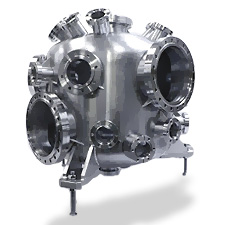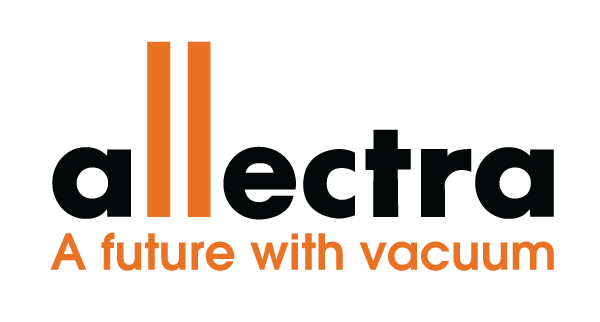Surface science is the complex interdisciplinary field concerned with the chemical and physical interactions occurring at the interface between two phases: solid-gas, solid-liquid, solid-vacuum, liquid-gas, etc. The terms surface and interface are used somewhat synonymously to define the boundary between two dissimilar phases, yet a distinction does exist:
- An interface is often described as the border between two spatial regions occupied by materials in different states, i.e. the point at which two solids or a liquid and a solid meet.
- A surface is often defined as the interface between matter and air/a vacuum.
Consequently, surface science studies concerned with solid materials are often conducted under controlled vacuum conditions. The development of modern surface science techniques is arguably linked at a fundamental level to the introduction of high- and ultra-high vacuum (HV/UHV) processes.
In this blog post, Allectra explores the fundamentals of surface science with a focus on HV/UHV studies.

A Brief History of Surface Science
Surface science emerged as an interlinked discipline of chemistry and physics in the early 1970s, following notable breakthroughs in the deposition of gaseous species onto metallic substrates. Nobel Prize-winning chemist Gerhard Ertl first described the adsorption of hydrogen on palladium in 1974. This research unlocked new understandings of heterogeneous catalysis and propelled the study of surface chemistry into a new era of quantitative observation. His research laid the foundations of modern surface science, providing new insights into academic, commercial, and industrial processes.
Yet the history of surface science stems back further. Without high-purity vacuum conditions, it can be extremely difficult – if not impossible, to accurately study the physics and chemistry of solid surfaces. Gerhard Ertl used low-energy electron diffraction (LEED) in his ground-breaking research on hydrogen adsorption; a technique that was discovered almost fifty years beforehand, in 1927.
LEED was initially deemed unsuitable for surface science-related applications as it used a collimated beam of low energy electrons to observe diffraction patterns and intensities of electrons reflected off surfaces; each of which was subject to interference from incident molecules in the process atmosphere. Simply put: LEED required better vacuum techniques to reach academic viability.
In the 1960s, there was a revolution in high-vacuum technologies that unlocked a new pressure regime for academic research and industrial processing: the ultra-high vacuum range, which extends below 10-9 mbar. This step forward was foundational to Gerhard Ertl’s research and has had a profound impact on the field of surface science at large.
Surface Science: Nanoscale Chemistry and Physics
Surface science spans a broad range of academic fields with real-world research and commercial applications. Researchers continue to study the science of surfaces in HV/UHV conditions to illuminate both the chemical and physical characteristics of myriad materials, providing insights into properties as varied as:
- Catalysis
- electronic and optical
- Quantum phenomena
- Piezoelectricity
- Ferroelectricity
- Tribology
Analyzing these interfacial properties at the nanoscale has provided a better understanding of materials and technologies at the atomic level. This has proven instrumental in the development of thin film structures, 2d-materials, quantum computing, clean fuel cells, monomolecular materials, new ecological processes, organic photovoltaics, and much more.
HV/UHV Components for Surface Science Applications
Allectra provides high-technology solutions for scientific and engineering markets, with a catalog of HV/UHV components optimized for surface science applications. We have a storied history of product development for cutting-edge areas of research and are prepared to collaborate on bespoke product resolutions to your vacuum requirements.
Contact a member of the Allectra team today to find out more about our HV/UHV capabilities and our experience with other leading experts in surface science applications.
